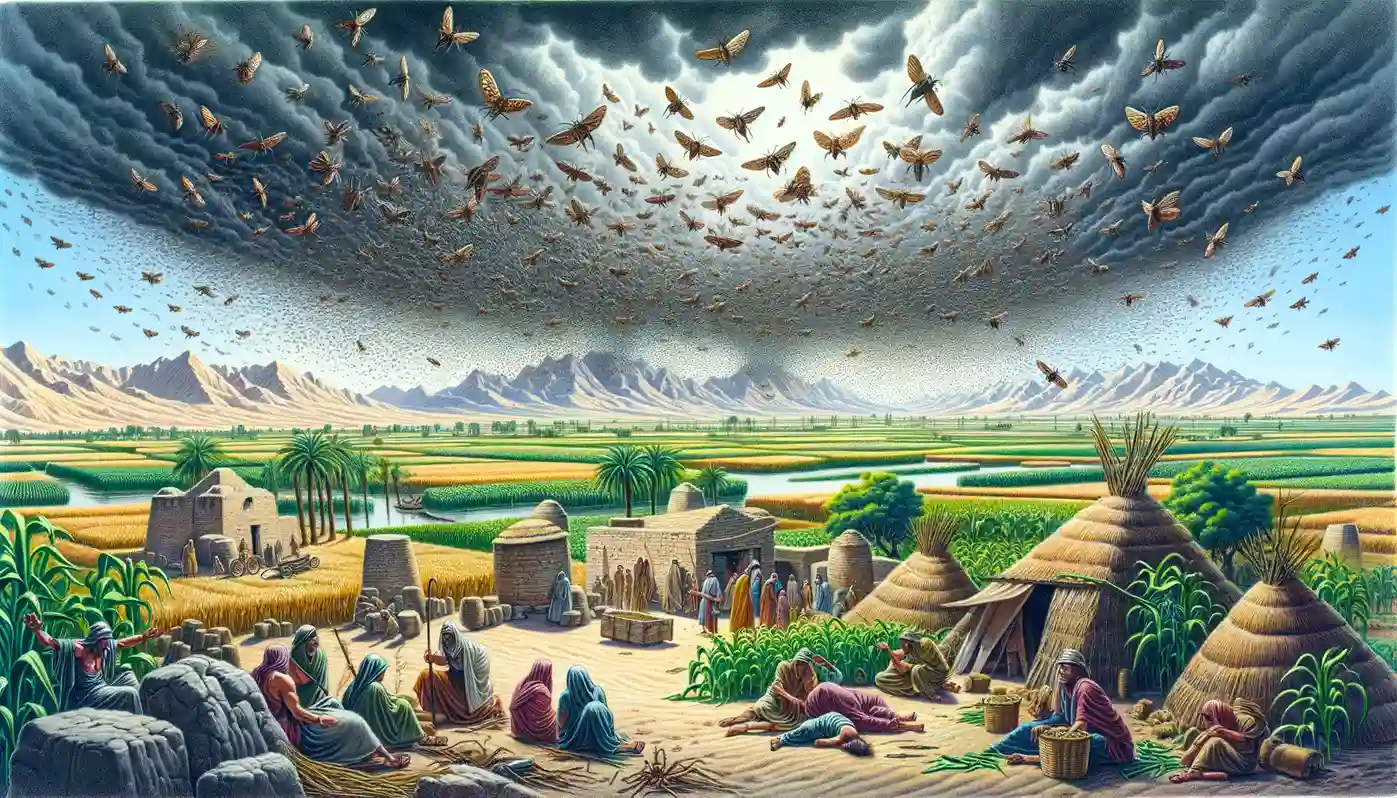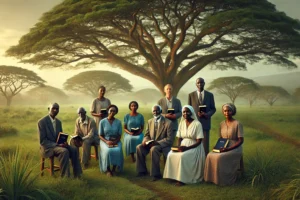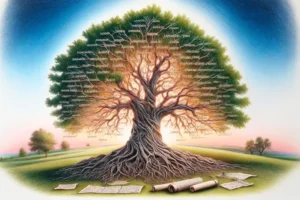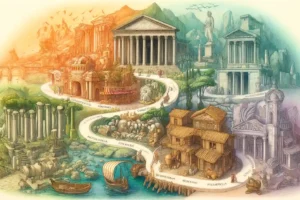
Ten Plagues of Egypt
Here are quick facts about each of the Ten Plagues of Egypt as described in the book of Exodus:
- Water Turned to Blood: The Nile and all Egyptian water sources turned into blood, killing fish and making the water undrinkable, demonstrating God’s power over the Nile, which was worshipped as a god itself.
- Frogs: Frogs invaded every part of Egyptian homes and lands, symbolizing fertility but becoming a nuisance and plague, challenging the Egyptian god Heket, who had a frog’s head.
- Gnats or Lice: Dust became gnats or lice, affecting people and animals. This plague mocked the Egyptian god Geb, the god of the earth.
- Flies: Swarms of flies distressed only the Egyptians, sparing the Israelites. This showed divine distinction between the two peoples.
- Pestilence on Livestock: A severe pestilence killed only Egyptian livestock, sparing the Israelites’ animals, highlighting God’s control over animal life and challenging the Egyptian god Hathor, depicted with a cow’s head.
- Boils: Painful boils afflicted Egyptians and their animals, challenging Egyptian healers and gods associated with medicine and healing.
- Thunderstorm of Hail and Fire: Hail mixed with fire rained down, devastating the land and crops, showing God’s power over the weather and agricultural deities like Isis and Seth.
- Locusts: A locust swarm consumed any remaining crops after the hail, emphasizing the completeness of God’s judgment and the impotence of the Egyptian god Osiris, linked to crop fertility.
- Darkness: Darkness covered Egypt for three days, a direct challenge to the sun god Ra, one of Egypt’s most important deities.
- Death of the Firstborn: The death of every firstborn, from the Pharaoh’s household to the dungeons, demonstrated God’s ultimate sovereignty over life and death, leading directly to the Exodus of the Israelites from slavery.
The Ten Plagues of Egypt, as narrated in the Book of Exodus, serve not only as divine retributions but also as profound theological statements in the narrative of Israelite liberation from Egyptian bondage. Each plague targets specific Egyptian deities, systematically dismantling the Egyptian pantheon’s perceived power and asserting the supremacy of Yahweh. Here is a more detailed theological and symbolic analysis of each plague:
- Water Turned to Blood (Exodus 7:14-24):
- Theological Significance: The Nile, considered a god in its own right (Hapi), was essential to Egypt’s agricultural and societal welfare. Turning it into blood symbolized the death and dysfunction of Egyptian life and the impotence of its gods against Yahweh’s will.
- Symbolism: Blood as a symbol of death contrasts with water, a source of life, highlighting the comprehensive disruption of Egyptian sustenance and purity.
- Frogs (Exodus 7:25-8:15):
- Theological Significance: Frogs were associated with fertility and were linked to the goddess Heket, who assisted women in childbirth. The plague turned a symbol of life into an overwhelming curse.
- Symbolism: The intrusion of frogs even into the private quarters of Egyptians (beds, ovens) illustrates the total invasion and perversion of normal life.
- Gnats or Lice (Exodus 8:16-19):
- Theological Significance: Arising from the dust of the earth, these pests could have mocked the god Geb, the earth god, highlighting his inability to protect the land.
- Symbolism: The plague emphasized humiliation and discomfort, impacting both people and animals universally.
- Flies (Exodus 8:20-32):
- Theological Significance: This plague demonstrated a clear distinction between the Israelites and Egyptians, as Goshen (where the Israelites lived) was spared, showcasing divine selectivity and protection.
- Symbolism: The pervasiveness and annoyance of the flies disrupted daily life and signified corruption and decay.
- Pestilence on Livestock (Exodus 9:1-7):
- Theological Significance: Directly challenging gods associated with animal husbandry such as Hathor and Apis, this plague struck at the wealth and economic foundation of Egypt.
- Symbolism: The death of livestock represented a direct blow to wealth, status, and food security.
- Boils (Exodus 9:8-12):
- Theological Significance: Boils affecting all Egyptians undermined the power of health and healing gods such as Sekhmet, Isis, and Thoth.
- Symbolism: The boils, visible on the skin, marked the Egyptians physically and spiritually as suffering under divine judgment.
- Thunderstorm of Hail and Fire (Exodus 9:13-35):
- Theological Significance: This plague challenged the sky and weather deities like Nut and Set. The mixture of fire (usually associated with divine presence) and ice highlighted the uncontrollable and destructive power of God.
- Symbolism: The destruction of crops and trees signified not only immediate economic ruin but also future famine and hardship.
- Locusts (Exodus 10:1-20):
- Theological Significance: Following the hail, locusts obliterated any hope of recovery by consuming all remaining vegetation. This was a direct challenge to Osiris, the god of vegetation and fertility.
- Symbolism: The locusts represented overwhelming and unstoppable ruin, a complete devastation of the land.
- Darkness (Exodus 10:21-29):
- Theological Significance: Darkness for three days was a profound affront to Ra, the sun god, one of the most important and powerful Egyptian deities.
- Symbolism: Darkness, a metaphor for ignorance and chaos, reversed the order created by Ra, plunging Egypt back into a primordial state.
- Death of the Firstborn (Exodus 11:1-10, 12:29-36):
- Theological Significance: The most severe and devastating of the plagues, it demonstrated God’s power over life and death, directly challenging the Pharaoh’s divine status.
- Symbolism: The death of the firstborn, a blow to both the familial and dynastic continuity of Egypt, underscored the total subjugation of Egypt under God’s will.
Collectively, these plagues are not merely punitive but serve a redemptive purpose for the Israelites, affirming Yahweh’s commitment to their liberation and underscoring the impotence of the Egyptian gods. This sequence of divine acts culminates in the Passover, which not only signifies the physical exodus from Egypt but also marks the spiritual birth of Israel as a nation under God’s protection.
See also: Artistic impressions of the 10 plagues



